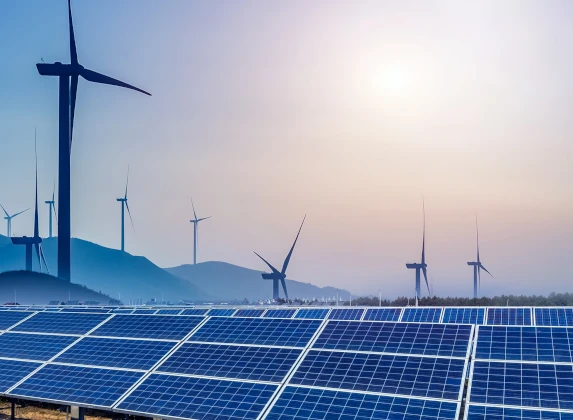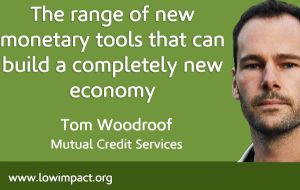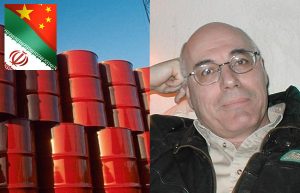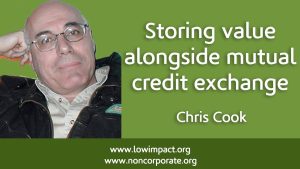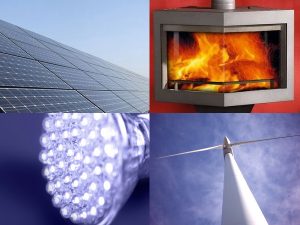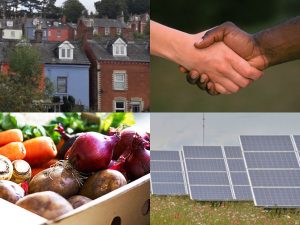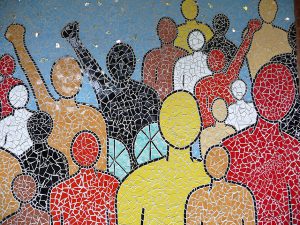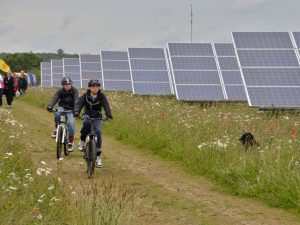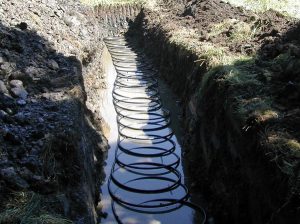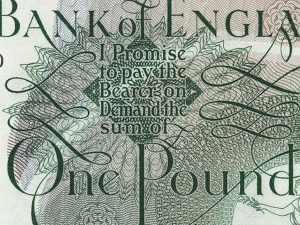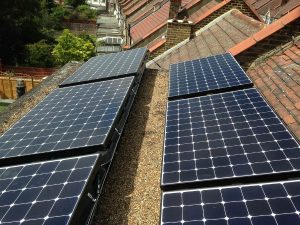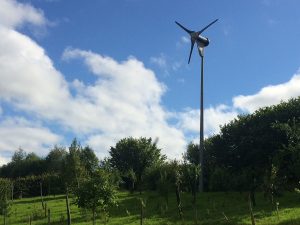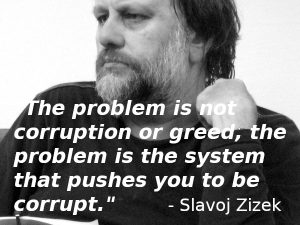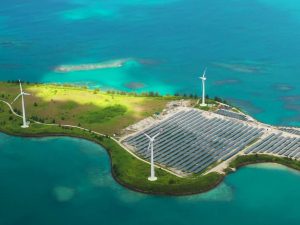Interview with Marcus Saul of Island Power, an energy company with incredible ideas that could be world-changing, in terms of building a new kind of (commons) economy. He’s working with Chris Cook, who I’ve previously interviewed.
Here’s a summary of our conversation. See the video below for the full interview.
What’s the problem you’re trying to solve? What’s your motivation?
The key one is climate change. But also, providing affordable energy to everyone. We have to focus on the ‘energy trilemma’, which is a) the cost of energy, b) the environment, and c) resilience. Usually, one is achieved at the expense of the others. For example, building resilience will often increase costs, and focusing on cheap electricity is often to the detriment of environment and resilience. It’s diffiult to focus on all three, but we’re looking at resilience in terms of environment, cost and economy – delivering local jobs. We want to help bring forward a rapid acceleration in renewable energy, and we want to make rural or remote areas more self-sufficient in energy, and more attractive economically.
Tell us about your project(s). Give us an overview of what you’re doing. Just renewables? Wind? Solar? Any others? Why islands?
We classify ourselves as a ‘smart energy accelerator’. We’re called Island Power because we focus on communities in an ‘island’ location – i.e. not necessarily grid-connected. This could be a literal / geographical island, or any rural location. We look at the entire energy profile of a location – not just electricity. There’s usually been a movement of people out of these areas in the last 50 years, due to a lack of economic opportunities. We’re looking to provide affordable energy. We look at the heating and mobility as well as electricity consumption. We develop a projection of what that location will need over the next 10-15 years in terms of quantity and technology – which might include solar, wind, hydro, biogas, heat pumps etc. We want to find the best solution for a particular location. For example, a lot of islands we’re working with have a lot of tourism, with buildings that are next to the sea – but they still use energy based on hydrocarbons / fossil fuels – even for things like cooling / air conditioning, when they could be using marine thermal cooling (or ocean thermal energy conversion).
I’ve talked with your business partner, Chris Cook about use-credit obligations. It took me a while to grasp the genius of this; when the penny dropped, I called Chris to apologise. It’s a world-changing idea, isn’t it? that how you’re generating the funds to install infrastructure?
Yes. The reason the rollout of renewable energy is slow and patchy is that no-one wants to pay for resilience. This is where Chris’s idea comes in. At the moment, businesses looking at installing large-scale renewables will evaluate all the costs involved and make an assumption over a number of years about the kinds of returns they’d expect. Communities often end up with expensive loans or onerous agreements around local resources and installations, but without local expertise to maintain infrastructure after it’s installed.
The genius of the use-credit obligations approach is that it can help small businesses avoid debt, by issuing vouchers for future produce or services, and selling them at a discount, to attract customers.
The example Marcus gives is a small farmer who, instead of taking out a loan to create an apple orchard, instead approaches a local cider-maker and offers vouchers for the apples that will be produced, but at a discount – so the cider-maker will get 120 apples for the price of 100 (say), when they’re harvested. The cider-maker saves money on apples, and the farmer gets the money required to set up the orchard. This is just an example, but the idea works for any kind of business.
In the case of energy, it means that communities will own their own energy infrastructure.
The vouchers don’t come from somewhere else – they’re issued by the community?
Yes. In the example of the apples above – the farmer knows roughly how many apples can be produced, and in the case of energy, the community knows roughly how much energy can be produced with the infrastructure they want to build.
The purchasers of the energy vouchers (‘energy-credit obligations’, or ECOs) can redeem them for energy when required, keep them as a form of savings, or sell them for a profit.
So, for example, a community group want to put up a wind turbine. They issue vouchers, get the money to put up the turbine, and they’ll get customers because the vouchers represent cheaper energy than current market prices?
Exactly. Plus, we offer vouchers to the local community first, and any left over are sold into the market. So we try to ensure local energy resilience, which is a big difference from other models. If communities generate renewable electricity, they export it to a grid (usually at a low price) and import it back (usually at a higher price). Instead, we distribute via a local micro-grid first, and only then, any excess is exported. This builds local resilience.
In your ideal world (if you were energy minister, say), would all energy infrastructure be owned by communities, and everyone’s energy generated locally?
100%. You can’t have a healthy local economy without a functioning local energy system. If the energy system is extractive, it hinders the local economy. If we move away from the centralised model to a decentralised model, we’ll be able to train up more people in a range of diverse skills, repopulate and generate employment in remote areas, and spread energy production and demand more widely, rather than rely on huge, centralised energy companies. Also, the more remote locations tend to have more natural energy resources, but they never seem to get a good deal.
It’s similar to what happened with the discovery of oil in the Middle East and various other place. The agreements set up were highly extractive, which meant they benefited giant energy companies, but not the local communities. The same is happening now with renewable energy. Our model allows communities to own the energy production, and to benefit from the financial output.
So your approach allows infrastructure to be built without incurring debt?
Yes. That’s the interesting thing. When you start to build the infrastructure, this is where the acceleration comes in. We’re creating a diverse infrastructure than can address different problems. We have agreements with equipment manufacturers (for example, wind turbines). They have production / salary costs, plus marketing, depreciation etc., so they need to get their kit to market and sell it. We provide an ‘energy as a service’ solution, working with the manufacturers as partners. They provide their equipment in return for energy revenues from our projects. So they get a long-term, secure income.
This is another good point for Chris’s plan – energy producers are rewarded for efficiency in providing really good equipment, whenever it’s required, so that the projects generate lots of energy, which provides their return.
Hang on – wasn’t that how James Watt introduced his original steam engine? He didn’t sell his engine, he just asked for payment from the coal saved – because his engine was so much more efficient (than Newcomen’s)?
Yes. Newcomen’s engine was inefficient – so he asked for 1/3 of the coal saved by using his engine.
So this is a tried and tested idea?
Yes. He stimulated the industrial revolution, and we’re trying to stimulate a green, community-based energy revolution.
I think your idea works well for working-class communities, where most people live – which is very important (as they’re often left behind or ignored). This works because it doesn’t require debt, and is therefore cheaper and so doesn’t require altruism. You can just rely on people’s self-interest to get this to spread.
Yes. Ideology has a cost – and often, working-class people can’t afford it.
(NB: am I imagining it, or did my Black Country accent and Marcus’s scouse accent get a bit stronger at this point?)
This addresses the fundamental issue of cost. But it’s also about job creation, and putting the heart back into communities. With production via micro-grids, we can move to a decentralised system, with lots of social benefits on the back of it.
It blows my mind.
I know. Before I met Chris, I’d been looking at how to provide energy to refugee camps. They often burn paraffin, wood etc. for cooking and heating, which causes health problems. Chris told me his plan, and (cf Jerry Maguire) he ‘had me at hello’.

His ideas can be hard to grasp at first.
Maybe because they don’t appear revolutionary, until you get them, and then you can’t see things any other way.
I believe that the vouchers are denominated in kwh? That’s crucial isn’t it? If they were denominated in national currency, they would fall in value over time. But a kwh now is still a kwh any time in the future, so the vouchers are inflation-proof. Is that right?
Exactly, yes.
Where are you at, at the moment?
We’re very new, but we’re in negotiations with the government of an island in the Pacific, which will have a knock-on effect on a chain of islands. We’re also looking to start projects on a UK island and a Caribbean island.
how are you constituted? Are you a co-op?
We’re a limited liability partnership during the set-up phase. On the islands – for example in the Pacific, next year, they’ll set up as an ‘unlimited company’. Again, like James Watt, we’re going back to old legal and financial technology. Unlimited companies aren’t really used these days – but this is all part of Chris’s ‘nondominium’ idea.
I’ve also talked with chris about this idea – can you explain it, including why it’s a good idea?
It’s about having an entity that it’s not possible for one vested interest to take over and control. As soon as you have shares, that’s what will happen. The nondominium model allows you to have what’s called a ‘custodian’ – who could be a parish councillor or a respected outsider. There are no legal obligations, but they have a right to veto.
So something like an ethical oversight?
Very much so. It prevents one person/group’s interest being favoured over others. Then there’s also a ‘steward’, or operational partner, which in our case would be the equipment manufacturer / service provider. They have financial and legal liabilities – in case of faulty equipment, problems with the installation etc. Then there are the users themselves. In the nondominium framework, users are members – they’re inside the framework, unlike all other models, where they’re outside. The fact that users are members means that Ofgem doesn’t have to be involved, because the group aren’t going to be over-inflating prices for themselves.
What’s the plan / ambition? How far could this idea spread / how big could it be? And what are the barriers, and how can we remove them?
It could be huge. The first barrier is psychological, among consumers. To overcome this, we need to show people that it works. With the current model, each party (energy producers, distribution, users, manufacturers) has competitive vested interests. Any encroachment on their vested interests takes away business and revenue. But with our approach, everyone is part of it, and gets benefits if it’s successful. To scale, instead of growing to be a huge energy provider, we federate small groups and micro-grids to cover larger areas that require large-scale renewables. This will allow us to build renewable-energy and community-owned ‘natural grids’, separate from (sometimes quite creaky) national grids.
How can people become customers, investors, volunteers – how can they get involved?
The islands we’re talking with in the Pacific will become a federation of island schemes. We’ll then be looking for investment to improve the website, and to build an energy ledger – to give the ability to account for the energy used. After that, we’ll be building a toolkit for communities to set up their own scheme. We’ll be looking for individual as well as institutional investors, plus government loans or grants, in ways that reduce the cost to the consumer. And there will be ways to volunteer. Next year, we’ll launch a newsletter to let people know what’s being achieved.
Highlights
- The genius of the use-credit obligations approach is that it can help small businesses avoid debt, by issuing vouchers for future produce or services, and selling them at a discount, to attract customers.
- In the case of energy, it means that communities will own their own energy infrastructure.
- This addresses the fundamental issue of cost. But it’s also about job creation, and putting the heart back into communities. With production via micro-grids, we can move to a decentralised system, with lots of social benefits on the back of it.

